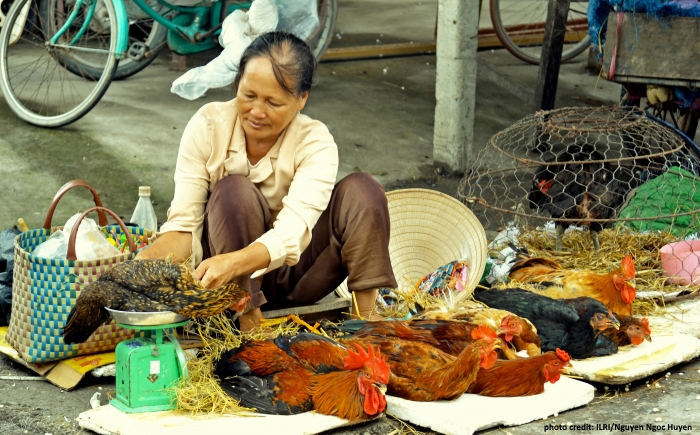Highly pathogenic avian influenza viruses threaten local economies, famers’ livelihood and food security in countries where they are considered endemic such as China, Vietnam, Egypt or Bangladesh. Due to their potential to reassort with human influenza viruses, some avian influenza viral strains are also a serious threat to public health. For these reasons, monitoring the circulation of avian influenza viruses is of paramount importance. Live bird markets are major targets for avian influenza virus surveillance programmes since they play a major role in the spread of the viruses. However, while sampling the market environment has become a widely used alternative to the labour-intensive sampling of live poultry, the design of surveillance programmes and the interpretation of their results are compromised by the lack of knowledge about the effectiveness of these sampling strategies.
Dr Timothee Vergne from the Royal Veterinary College (RVC), London, together with a team of veterinarians from Viet Nam, the Food and Agriculture Organisation of the United Nations (FAO) and the RVC, led by Professor Dirk Pfeiffer (Chair Professor of One Health), investigated the sensitivity and specificity of five different sample types for detecting avian influenza virus subtypes H5N1 and H5N6: oropharyngeal duck samples, solid and liquid wastes, poultry drinking water and faeces. Results suggest that the sensitivity of environmental samples for detecting H5N1 viruses is equivalent to that of oropharyngeal duck samples; however, taking oropharyngeal duck samples was estimated to be more effective in detecting H5N6 viruses than taking any of the four environmental samples. This study also stressed that the specificity of the current surveillance strategy in live-bird markets was not optimal, leading to some false positive results.
The research was published in Scientific Reports and the whole article is available here.

